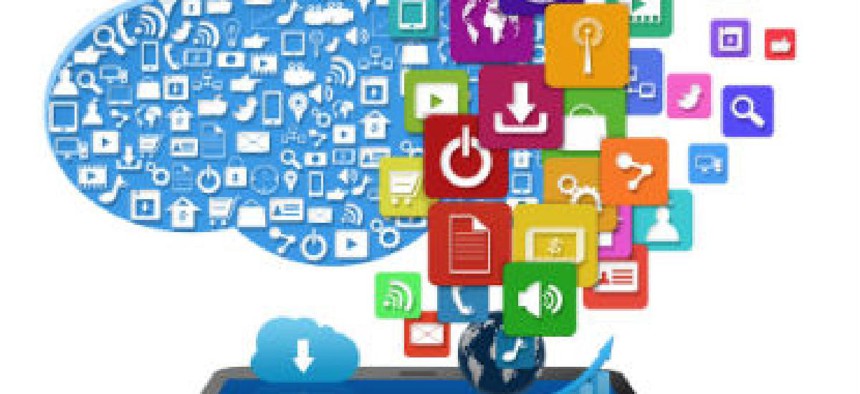How to balance cybersecurity threats and demographic trends in the federal workforce.

Today’s workforce trends are converging to impact federal IT deployments.
First, government agencies have to prepare for a complex and unprecedented environment of cyber threats. From confidential tax returns to classified intelligence briefings, government agencies regularly handle sensitive information that requires additional safeguards. This means that they have a unique obligation to protect their data against a wave of new cybersecurity threats. Technology innovations like the internet of things, which could impact development of smart buildings, fleet telematics and more, suggest that security will be an even more critical priority in the coming years.
Second, millennials have become the largest generation in the U.S. workforce and will constitute three out of every four workers by 2025. The first true digital natives, millennials are uniquely comfortable using their mobile devices for both work and leisure. They send emails while taking selfies and update presentations while playing Pokemon Go -- all on one device in the span of a few minutes. When choosing a job, 60 percent of millennials consider whether they will have access to state-of-the art technology.
Millennials are more likely to use wearable devices than any other generation, and they are increasingly using them for business purposes. Park rangers can use wearables to track their exact location while in the field, and refinery inspectors can use wearables to stay connected while investigating a facility. These devices -- like mobile devices writ large – are proving essential to the modern federal workplace.
As a result, government agencies, like all industries, must adopt a mobile-first strategy that goes beyond smartphones and includes wearables.
Over the next few years, it will become critically important for government agencies to adjust to this new reality. During that transition, they will need to recognize the unique rewards and risks that come with a millennial-focused, mobile-first strategy.
Because millennials are so comfortable with their mobile devices, they tend to be more productive than older generations when using them. A recent study from Frost and Sullivan found that millennials see the greatest productivity gains from using smartphones. In the study, millennials reported gaining an additional hour of productivity each day, and 81 percent claimed that their devices make them more efficient.
But the same comfort that makes millennials more productive also makes them more likely to engage in risky online behavior. According to a Forcepoint study, 70 percent of millennials admit to using unprotected Wi-Fi connections, 32 percent download unauthorized apps, and 42 percent use the same password across all apps. Although these behaviors create potential security risks, what's worse is that many millennials are not concerned about them. One study found that more than a third of all millennials don't worry about digital privacy at all.
So how can government agencies adopt a mobile-first strategy that maximizes the benefits of millennial productivity while minimizing the security risks that millennials may present?
To address this issue, the federal government unveiled its CIO Digital Strategy in 2012. The strategy provided a framework for agencies to collaborate and effectively harness government mobility solutions, a key part of which encouraged agencies to deploy bring-your-own-device programs similar to the ones that have gained traction in the private sector.
But because of the government's unique emphasis on security, BYOD strategies have often failed to address the particular needs of the federal workforce. Most phones in a BYOD program cannot meet the strict compliance and reporting regulations that come with handling highly confidential and classified data. As a result, many agencies remain unsatisfied with BYOD programs and have chosen not to deploy them as a mobile solution.
Instead, agencies have replaced their BYOD programs with a choose-your-own-device mobile strategy. In a CYOD program, agencies generally offer one or two devices per manufacturer and give employees the opportunity to choose the device they prefer. The agency then pays for the device and the plan.
Agencies are choosing CYOD programs because of the additional security protocols that they can deploy. With these solutions, they have much more control over the hardware and software on a device, meaning that they can tailor a mobile security platform to their particular needs. And they can do so cost effectively, meaning they won't need to worry about any potential budget hurdles along the way.
While CYOD programs give agencies the critical security infrastructure they need, they also provide the flexibility that millennial employees want. Because the security on these devices is often built into both the hardware and the operating system of the device, users don't have to think about or interact with all of the security elements running in the background. All they see is a familiar interface that provides an intuitive, seamless experience identical to the one found on their personal smartphones. But if a hacker tries to tamper with the device, access can be immediately blocked to prevent a breach of data. The result is a device that millennials are comfortable using and government agencies can trust.
CYOD strategies can allow millennials to unlock the full potential of their productivity while ensuring that important government data remains locked away from potential cyber threats. As a result, many government agencies are turning to these strategies as a cost-efficient way to recruit and retain millennial talent while updating their cybersecurity infrastructure for a new, complex threat environment. It's an ideal way for government agencies to balance the millennial preference for flexibility and the institutional need for security.






